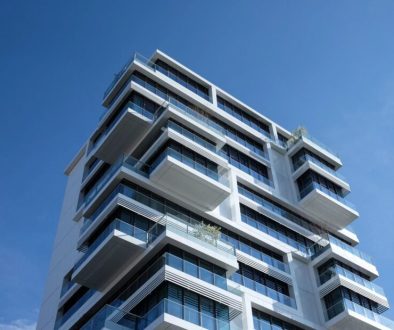What Investors Should Know About Mixed-Use Developments
Investing in mixed-use developments can be a lucrative opportunity. This blog post reveals key insights for investors considering this growing trend.
What Investors Should Know About Mixed-Use Developments
Mixed-use developments have surged in popularity over the past few years, offering a unique blend of residential, commercial, and recreational spaces within a single project. This innovative approach to urban planning not only maximizes land usage but also creates vibrant communities. As an investor, understanding the dynamics and potential of mixed-use developments can unlock lucrative opportunities. In this article, we will delve into what mixed-use developments are, why they are important, the benefits they offer, key considerations for investors, and trends shaping their future.
Understanding Mixed-Use Developments
Mixed-use developments combine various types of spaces—residential, commercial, and sometimes industrial—into one cohesive environment. These projects often feature apartments or condominiums above retail establishments, restaurants, and office spaces, creating a live-work-play atmosphere.
According to a report by the Urban Land Institute, mixed-use developments are experiencing a significant rise in demand as people increasingly seek convenience and community-centric living. The report highlights that 70% of millennials prefer living in walkable neighborhoods that offer access to diverse amenities and services, which mixed-use developments provide.
One prominent example is the development of the Hudson Yards in New York City, which boasts residential units, office spaces, and a variety of shopping and dining options. This integration of spaces not only enhances the overall living experience but also attracts a diverse range of tenants and customers.
The Importance of Location
When it comes to mixed-use developments, location is paramount. Investors must focus on areas with strong growth potential, good infrastructure, and accessibility. The ideal sites typically feature proximity to public transportation, major highways, and urban centers, which enhance the appeal for both residents and businesses.
For instance, developments located near major employment hubs often see higher occupancy rates due to the convenience they provide. The demand for housing in these areas can result in increased property values, making them attractive for long-term investments.
A case study that illustrates this point is the redevelopment of the former industrial area of East Boston into a mixed-use community. By leveraging its waterfront location and proximity to downtown Boston, developers were able to create a vibrant neighborhood that now features residential units, retail space, and parks, attracting new residents and businesses alike.
Benefits of Investing in Mixed-Use Developments
Investing in mixed-use developments offers several advantages that can contribute to their overall success:
- Diverse Revenue Streams: By combining residential, commercial, and recreational spaces, investors can benefit from multiple revenue streams. This diversification can mitigate risks associated with market fluctuations in any single sector.
- Increased Demand: With the growing preference for urban living, mixed-use developments align with changing consumer behaviors, often resulting in higher demand and occupancy rates.
- Community Building: These developments foster a sense of community by providing residents with access to amenities and services within walking distance. This can enhance tenant satisfaction and retention.
- Sustainability: Many mixed-use projects prioritize sustainability through green building practices and communal spaces, appealing to environmentally-conscious investors and residents.
- Tax Incentives: Certain regions offer tax incentives for mixed-use developments aimed at revitalizing urban areas, making these investments even more attractive.
Key Considerations for Investors
While the benefits of mixed-use developments are compelling, potential investors should also consider several factors before diving in:
- Market Research: Conduct thorough market research to understand the local demand for various types of spaces within a mixed-use development. This will help inform the design and tenant mix.
- Zoning Regulations: Investors must navigate local zoning laws and regulations that govern land use. Understanding these policies is essential for ensuring compliance and avoiding costly legal issues.
- Financing Options: Mixed-use developments often require significant capital investment. Investors should explore various financing options, including traditional loans, partnerships, or public funding avenues.
- Management and Operations: Effective management is crucial for the success of mixed-use developments. Investors should plan for ongoing operational costs, tenant management, and maintenance.
- Long-Term Vision: Investors must adopt a long-term perspective, considering not only the immediate returns but also the potential for growth and evolution of the community over time.
Trends Shaping the Future of Mixed-Use Developments
The landscape of mixed-use developments is continually evolving, driven by shifting consumer preferences and urban trends:
- Focus on Walkability: As people prioritize walkable neighborhoods, developers are increasingly designing mixed-use spaces that promote pedestrian-friendly environments, reducing dependence on cars.
- Integration of Technology: Smart technologies are being integrated into mixed-use developments, enhancing security, energy efficiency, and tenant experiences. This trend is expected to accelerate as technology becomes more prevalent in daily life.
- Health and Wellness: There is a growing emphasis on health and wellness within mixed-use developments, with features such as green spaces, fitness centers, and access to healthy food options becoming central to design.
- Adaptive Reuse: As cities face challenges from underutilized properties, adaptive reuse of existing buildings into mixed-use developments is gaining traction. This approach can preserve historical character while meeting modern demands.
- Community Engagement: Developers are increasingly involving the community in planning processes, ensuring that mixed-use developments reflect local needs and preferences.
Best Practices for Investing in Mixed-Use Developments
To maximize the potential of investing in mixed-use developments, consider the following best practices:
- Collaborate with Experts: Engage with urban planners, architects, and real estate professionals to gain insights into successful mixed-use design and functionality.
- Pilot Projects: Start with smaller projects as pilots to understand the market dynamics before committing to larger developments. This approach allows for testing concepts and gathering valuable data.
- Community Feedback: Actively seek feedback from residents, businesses, and local organizations during the planning stages to ensure the development aligns with community expectations.
- Sustainability Initiatives: Incorporate sustainable practices in the design and construction of mixed-use developments to attract environmentally-conscious investors and tenants.
- Marketing Strategy: Develop a robust marketing strategy that highlights the unique features and benefits of the mixed-use development to attract potential tenants and buyers.
Conclusion
Mixed-use developments present a compelling investment opportunity for those looking to capitalize on the evolving urban landscape. By understanding the intricacies of these projects, including their benefits, location importance, and key trends, investors can make informed decisions that pave the way for successful ventures. The rise of mixed-use spaces reflects a broader shift toward community-oriented living, making them an integral part of the future of urban development. Embrace this trend and position yourself at the forefront of a transformative movement in real estate. Contact us today to explore opportunities in mixed-use developments and take the first step toward expanding your investment portfolio.



